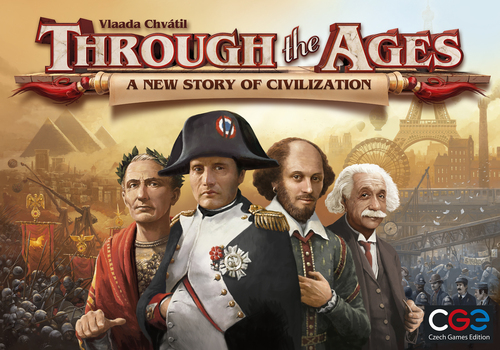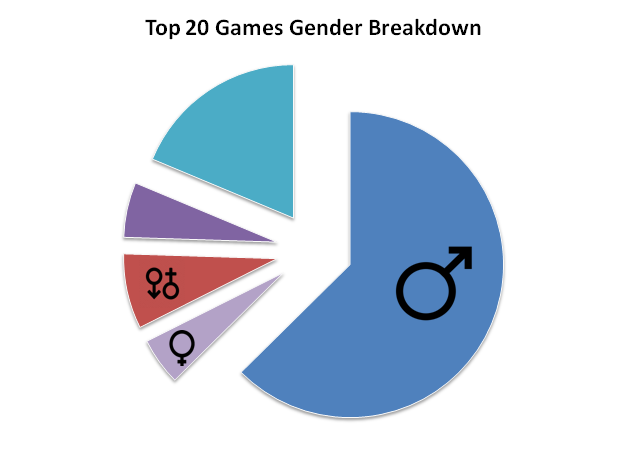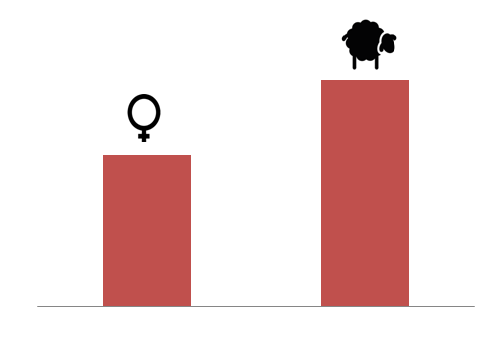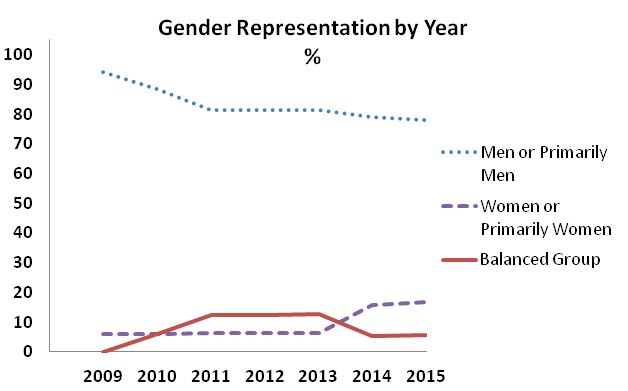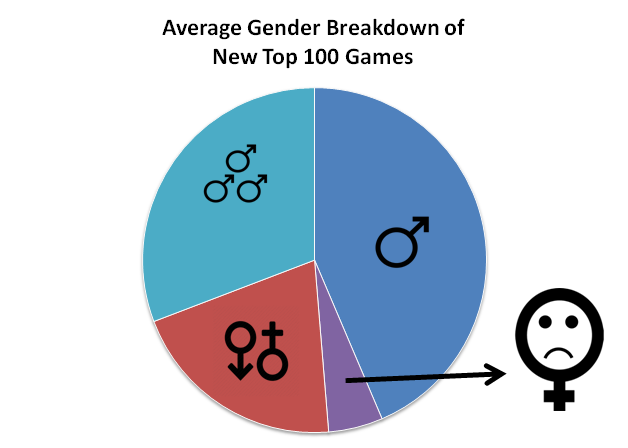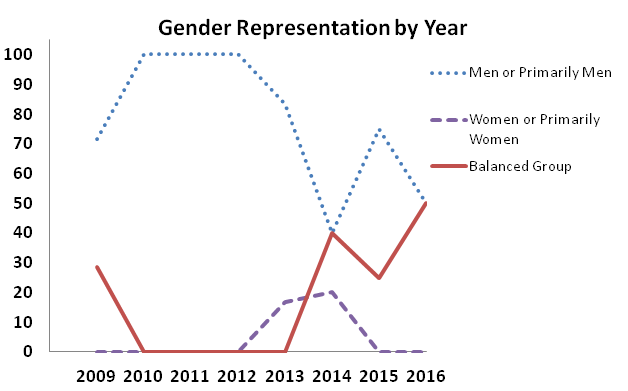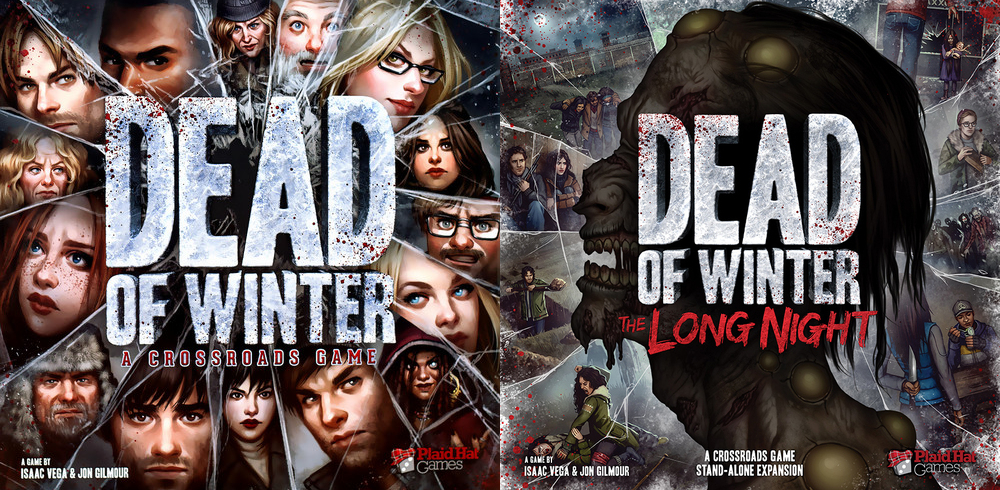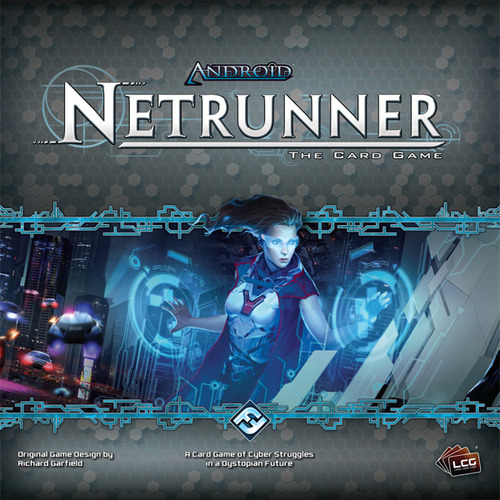You are more likely to see a sheep on the cover of a board game box than you are to see a group of women.
No, seriously.
A few days ago, I read Gil Hova’s article on representation in games. It’s right here, and you should check it out when you have a chance. It was brought to my attention by a conversation on Twitter regarding box cover art, and how representative (or not) it currently is.
I’ve gone into my thoughts of representation in game art before, and I won’t rehash that argument here, but I will say that yes, I like to see art that features women. I like to see art that features a variety of body types, genders, and skin colors, not to mention clothing and accessories. I think that diverse art is interesting and that there are very few legitimate reasons to not include some variety in a game. I know that this isn’t important to everyone, and I’m not using this data to advocate for or against any specific game.
Anyway…
Gil’s article is a couple of years old now, and the push for diversity in board gaming has increased since it was published. So I was curious – has anything really changed?
I decided to do a little digging.
To The Wayback Machine!
I went to the internet archive and looked at the top twenty games each year from 2009 to 2016 (the only years available), at least according to BoardGameGeek’s ratings. There I inspected the cover art associated with each game during the year(s) it was on the list and made note of the gender depictions.
But I noticed a problem: a lot of the games that made the Top 20 were repeats – the list doesn’t really shift much on a year-by-year basis. So I decided to collect a second set of data. This time, instead of just looking at the Top 20, I looked at the Top 100 games. Then, for each year, I collected data on any games published during the year prior. For 2011, for example, I looked only at games released during 2010. Effectively, this gave me a list of each year’s most popular new releases, and so I refer to them here as ‘new games’. If there were any big changes in representation over time, this list was more likely to capture them.
In hindsight, I probably shouldn’t have worried so much.
The Data
I plugged all that data* into a spreadsheet and ran the stats. Keep in mind that the sample sizes here are small, so determining whether something is technically significant isn’t always possible. That said, determining the rates of representation and whether those have changed over time is something I could do.
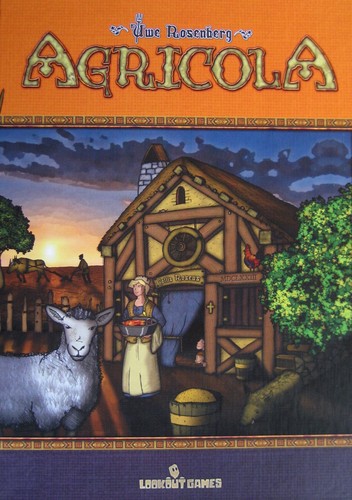 Before we start, I feel compelled to mention that issues of gender are incredibly complex, and I’ve simplified them here for the purposes of analysis. I in no way mean to exclude anyone’s preferred identity, and if I’ve presented anything in a way that contributes to the ongoing discrimination against or erasure of any group of people, please let me know. You can find my email address on the Contact Us section of the site.
Before we start, I feel compelled to mention that issues of gender are incredibly complex, and I’ve simplified them here for the purposes of analysis. I in no way mean to exclude anyone’s preferred identity, and if I’ve presented anything in a way that contributes to the ongoing discrimination against or erasure of any group of people, please let me know. You can find my email address on the Contact Us section of the site.
Okay, on to the data!
I started by looking at the average number of Top 20 games that portrayed women alone, men alone, men and women equally, groups of primarily woman, and groups of primarily men. In cases like Agricola, where a group was presented but one gender was clearly spotlighted more than the other, I coded the game as belonging to the group featuring more of the spotlighted gender. (Again, in the case of Agricola, that meant that the game was coded as containing primarily women.) I wasn’t able to identify any characters who were not either men or women (i.e. nonbinary, genderfluid, agender), and I also excluded any games that did not feature people at all.
Here’s what I came up with:
That’s the average across all years. Only 5% of games featured only women on the cover, and 5.8% featured a group of people made up primarily of women. Mixed groups with an equal number of men and women made up 7.9% of the games, and mixed groups featuring primarily men made up another 18.7%. The final 62.6% of games had covers that featured only men.
By comparison, 7.5% of games featured sheep on the cover.
But I digress. While an average number is informative, it doesn’t really account for any changes over time. To look at that, I simplified the groups a bit into three categories: games that featured only women or groups of primarily women, only men or groups of primarily men, and an equal number of men and women.
As you can see, the men still have it. However, while it might not look like much, there is an increase over time in games featuring women and a general decrease in games featuring only men.
Expanding To The Top 100
Now, like I said above, a lot of the games included in that analysis were repeats. While the results stand as I’ve posted them, a look at only new titles might be more indicative of actual changes in the market.
You know, or not.
On average, only 5.1% of games released within a year of making it onto the BGG Top 100 featured women alone. No games featured a group of characters made up primarily of women. Groups of predominantly men or men alone (i.e. without women) made up 74.4% of the sample. Groups containing an equal number of men and women came in at 20.5%.
But okay, like above, that’s an average. A more telling (and, thankfully, more hopeful) picture shows how representation has changed from 2009 to 2016.
Still not great, of course, and the sample size is too small to determine statistical significance, but there has been a noticeable downtick in games that feature only men and noticeable uptick in games that balance men and women. The state of games featuring only women though…that’s another story.
The Horse’s Mouth
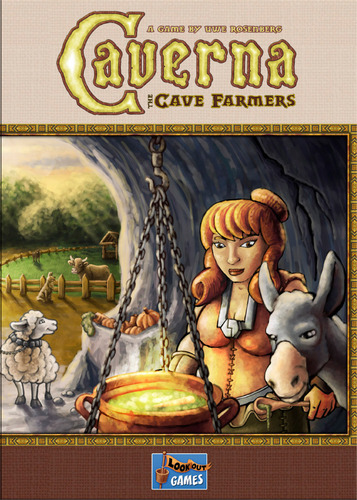 Armed with this info, then, I decided to talk to a few people more knowledgeable about board game art than I am. I sent emails to an artist and a couple of publishers whose games were part of my sample, and I asked them what they thought about representation in cover art.
Armed with this info, then, I decided to talk to a few people more knowledgeable about board game art than I am. I sent emails to an artist and a couple of publishers whose games were part of my sample, and I asked them what they thought about representation in cover art.
Klemens Franz, the artist behind Agricola and Caverna (two games that featured women on their covers), attributed his penchant for portraying women to his four daughters, and how they view themselves and the world around them. He went on to say that cover art is “a dialogue with the editor/publisher.”
“In Agricola and Caverna,” Franz said, “family growth is an elemental part. So having men and women on the cover was never a real question. Where we put them and in what context mostly reflects the historic/thematic setting.”
The idea that art is a collaborative venture was echoed by Colby Dauch of Plaid Hat Games. Dead of Winter, one of Plaid Hat’s most well-known titles, is a leader in diverse depictions of men and women. Dauch also credited fans with holding designers and publishers accountable:
“… with Dead of Winter: The Long Night, we ramped up the number of non-white people being represented and included a number of under-represented peoples in that set, not just under-represented races. This was in direct response to the fact that Dead of Winter was receiving praise for its diversity. A feedback loop has always existed between Plaid Hat and its fans and we hope that together we can continue to push one another towards inclusivity in our hobby and industry.”
Franz attributes similar shifts in his own art to designers who were willing to bring up issues of representation with him during the art direction process.
The TLDR
I don’t mean to be a downer, but if you’re a fan of equal representation, this isn’t all great news. Things are still rough out there in the board game world for women, and that’s not even touching other underrepresented groups or the intersections of gender with, well, anything.
The good news, though, is that the tide appears to be shifting. It’s still too early to tell for sure, but more games are featuring at least as many women as men on their covers. There’s still a long way to go – we’re nowhere close to parity – but it seems like we might be on the right track.
Like I said at the beginning, I’m not using this article to advocate for or against any specific game. I am, however, using it to advocate for conscientious consumerism – supporting products that you believe represent your values and priorities. The games that we support not only reflect our beliefs, but also put pressure on the market to supply our demand. A game’s artwork is a collaboration, and it reflects the priorities of all parties involved – including consumers and fans. Decisions to support or not support representation should be made with intent, and we need to recognize that choosing to ignore an issue is just as much a decision as choosing to highlight it.
We all have the right to buy the games that we want to play and to speak up for what we want to see. This hobby belongs to all of us.
Editor’s Note: Rio Grande Games and Asmodee were also contacted for comment. As of the time of publication, they have yet to respond.
*Author’s Note: With regards to the statistical data, I am happy to share my dataset with anyone. So here it is! It also contains information on racial representation, average game ratings, and the like. I’m going to be using that information for future work, but please take it if it helps you.
You can also reach us on social media, including Twitter and BoardGameGeek.

